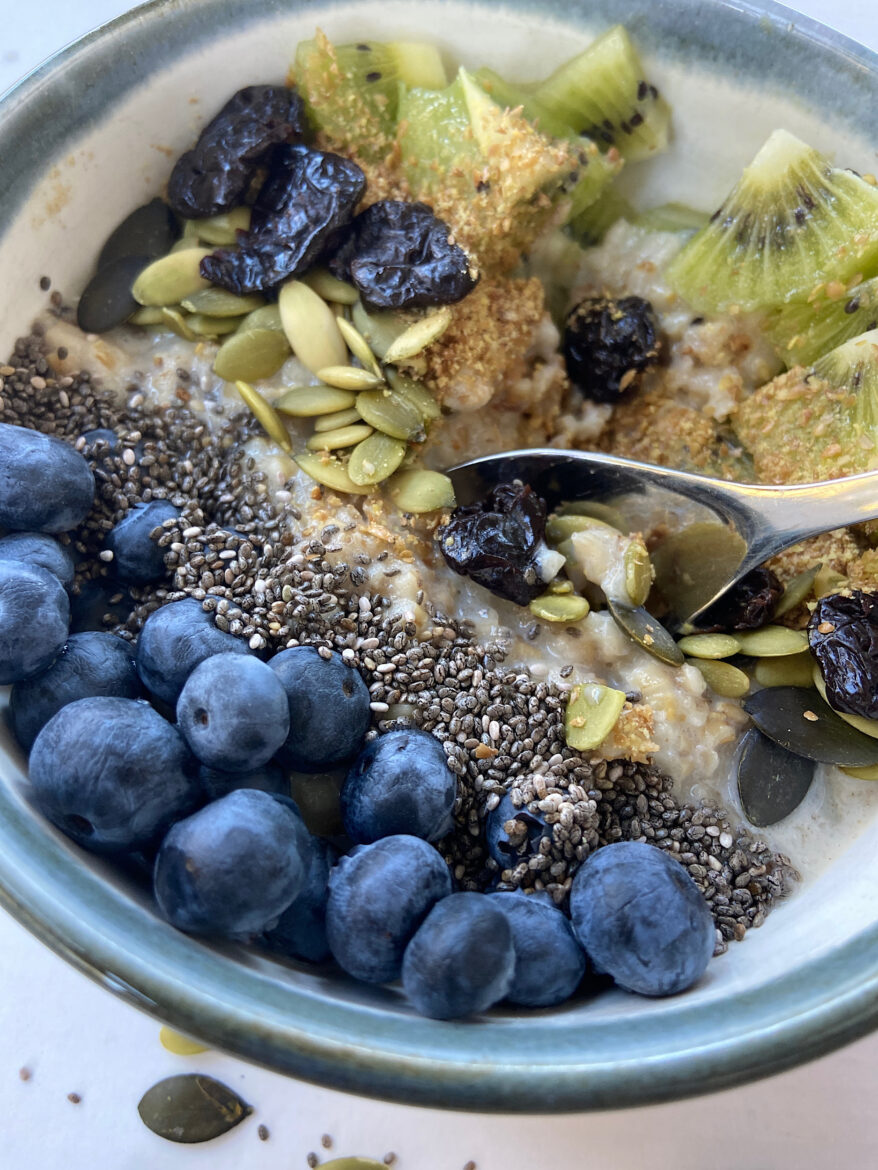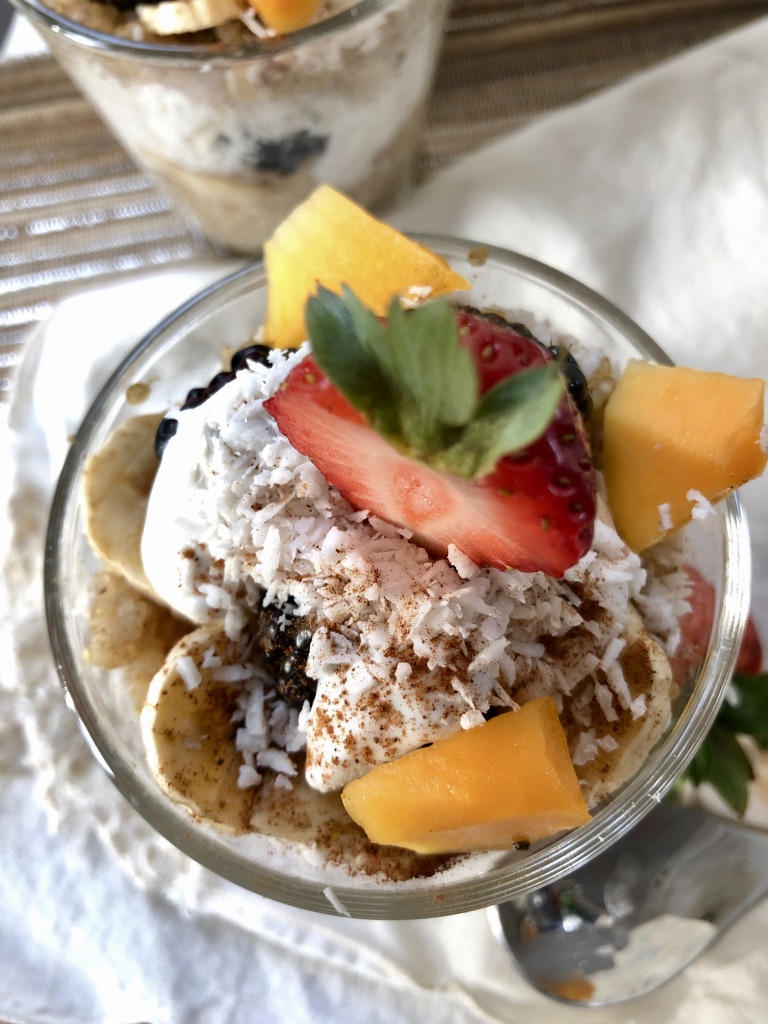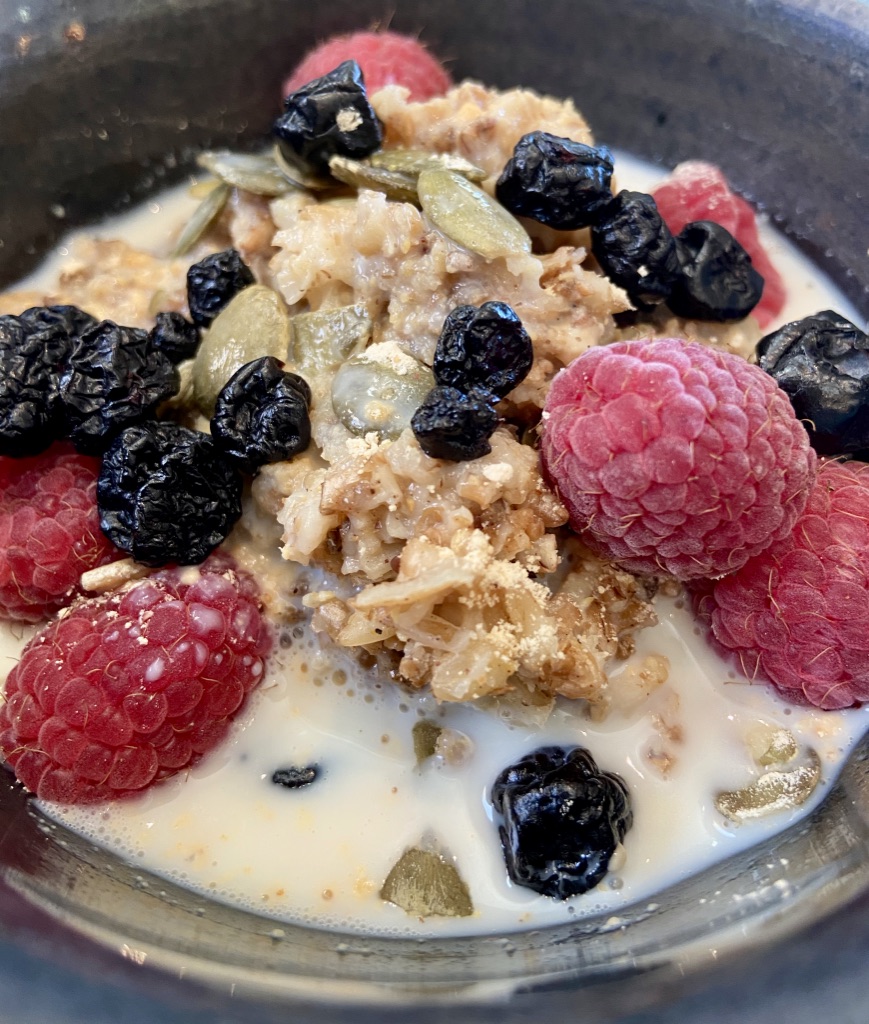When I was a kid growing up in rural Saskatchewan, my mother made my brother and I eat porridge every Monday, Wednesday and Friday morning before school. I absolutely detested it. Everything about it was gross to me, the texture, the taste and the smell. I finally got clever and would pretend to chew it, then spit it into my napkin and once it was all hidden, I would sneak to the washroom and flush it down the toilet. Awful child!
Tastes are changing!
Even in my 30s I announced to my mom that I would never traumatize my kids by making them eat her hard core version of porridge. Imagine her surprise when in my 40s oatmeal and steel cut oats became my, and my daughter’s favourite breakfast! She just shook her head when I asked if she could send me her recipe.
I can still see the measuring cup sitting out on the counter, prepared the night before, for the morning rush. All those dang grains that cooked up into a mushy mess, I couldn’t stomach…
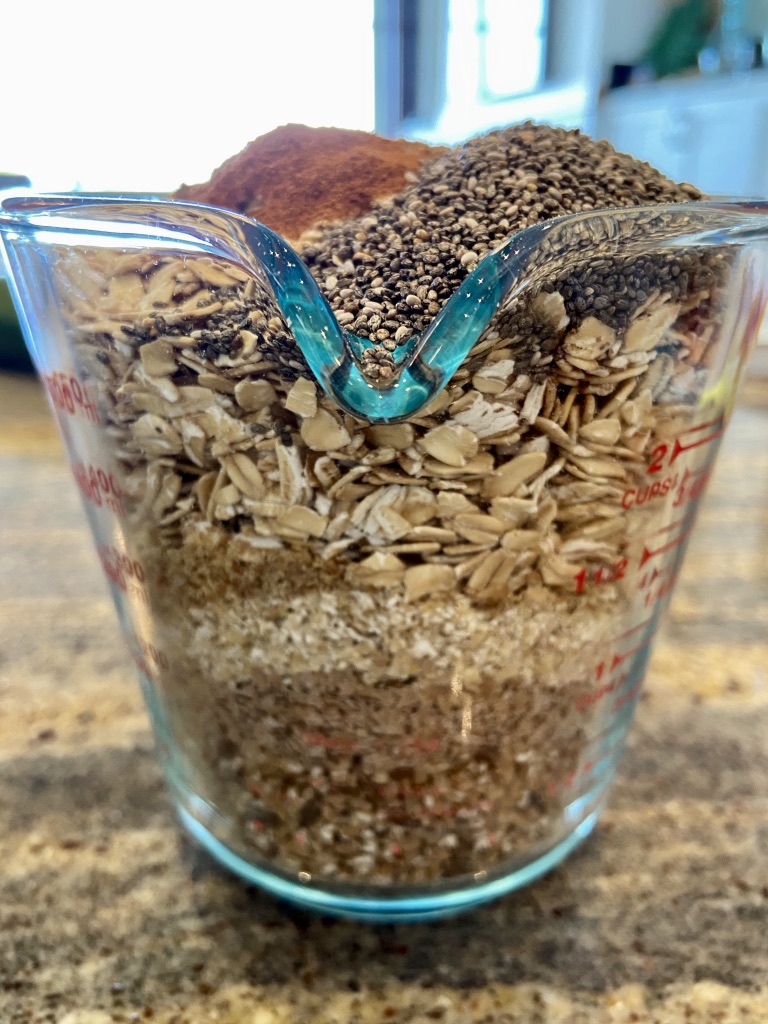
Now I look at this cup and see only goodness and health abound for the bodies it will nourish! This isn’t your average porridge… Mom used to encourage us to add butter (yuck) and brown sugar to it to make it more palatable. I prefer to add tons of fruit, dried and fresh, as well as nuts and seeds and some plant-based milk to it. Applesauce is a real treat as it is a whole food, yet acts as a sweetener without using added sugar.
Mom’s porridge recipe includes:
- Red River Cereal
- wheat bran
- ground flax seeds
- oat bran
- rolled oats
- salt
I added:
- chia seeds
- ground cinnamon
- plant-based milk
I love me some good steel cut oats and regular oatmeal, but when time permits, it’s worth the effort to get a whole variety of grains into the old digestive system!
Worried about gluten?
Gluten free everything seems to be the trend lately, but did you know that the actual number of people with true gluten sensitivities or celiac disease is very low? Don’t get me wrong, these are real diseases. The problem is, the gluten free industry is a billion dollar industry, so it is hard to know who to believe when it comes to why we should go gluten free. Some gluten free products substitute healthy ingredients such as whole grains, that do not contain wheat, (like buckwheat, amaranth and millet), for tapioca or potato starch, which are not as nourishing. One just has to be aware that ‘gluten free’ is not synonymous with ‘healthy’.
If you feel gluten is a problem for you, you may want to take a test administered by your doctor to find out. There are some great links on this post by Dr. Greger that address gluten sensitivity and How to Diagnose Gluten Sensitivity.
For the large majority of people, whole grains are very beneficial.
According to the Harvard School of Health, whole grains;
- are fibre rich, supplying the body with B-vitamins, iron, copper, zinc, magnesium, phytochemicals and antioxidants
- slow the conversion of starch into glucose, maintaining a steady blood sugar level in the body
- contain fibre, which helps to lower cholesterol levels and move waste through the digestive tract
- contain minerals and phytochemicals that may protect against some cancers
- when eaten instead of processed grains, may help reduce type 2 diabetes risk
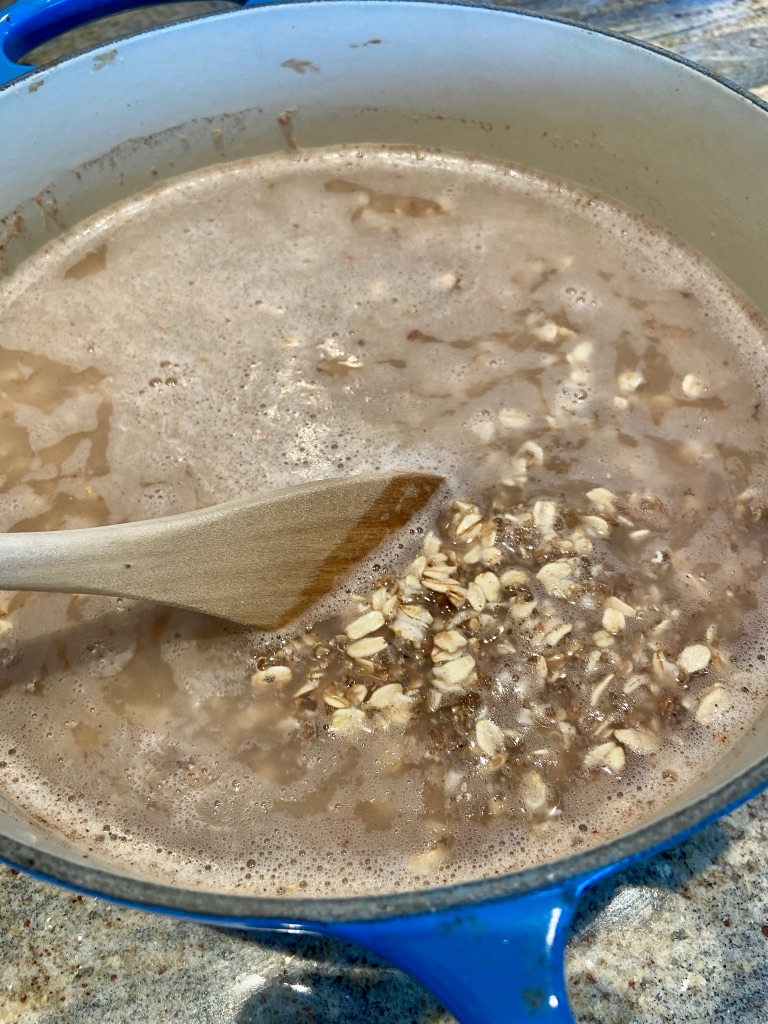
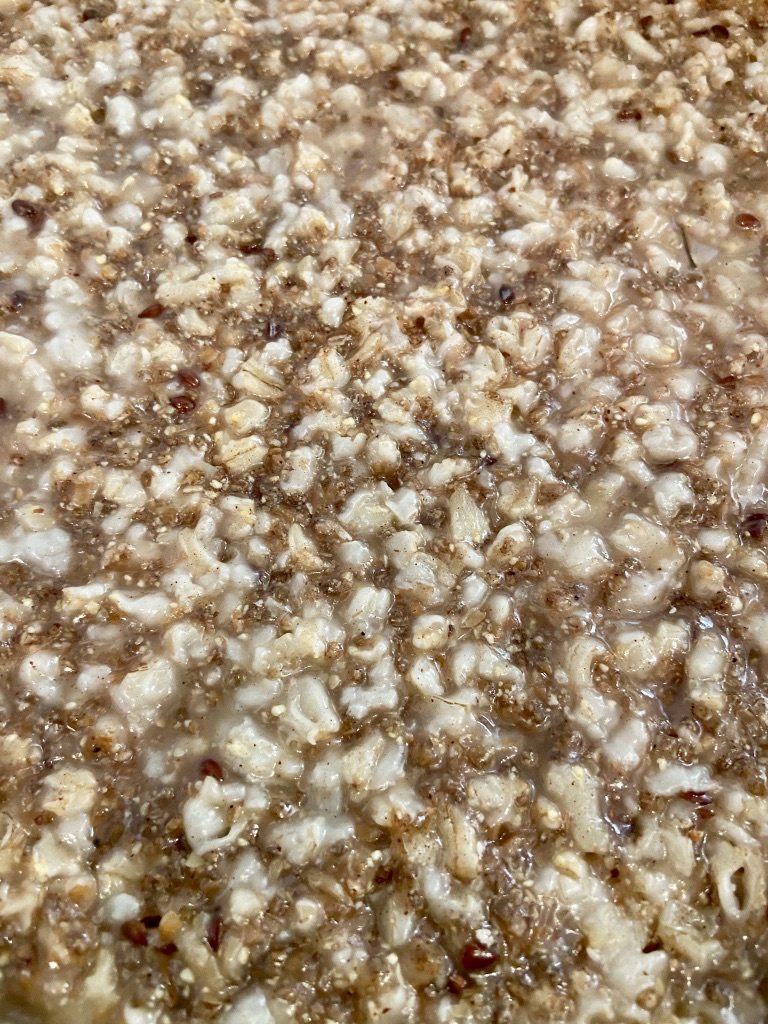
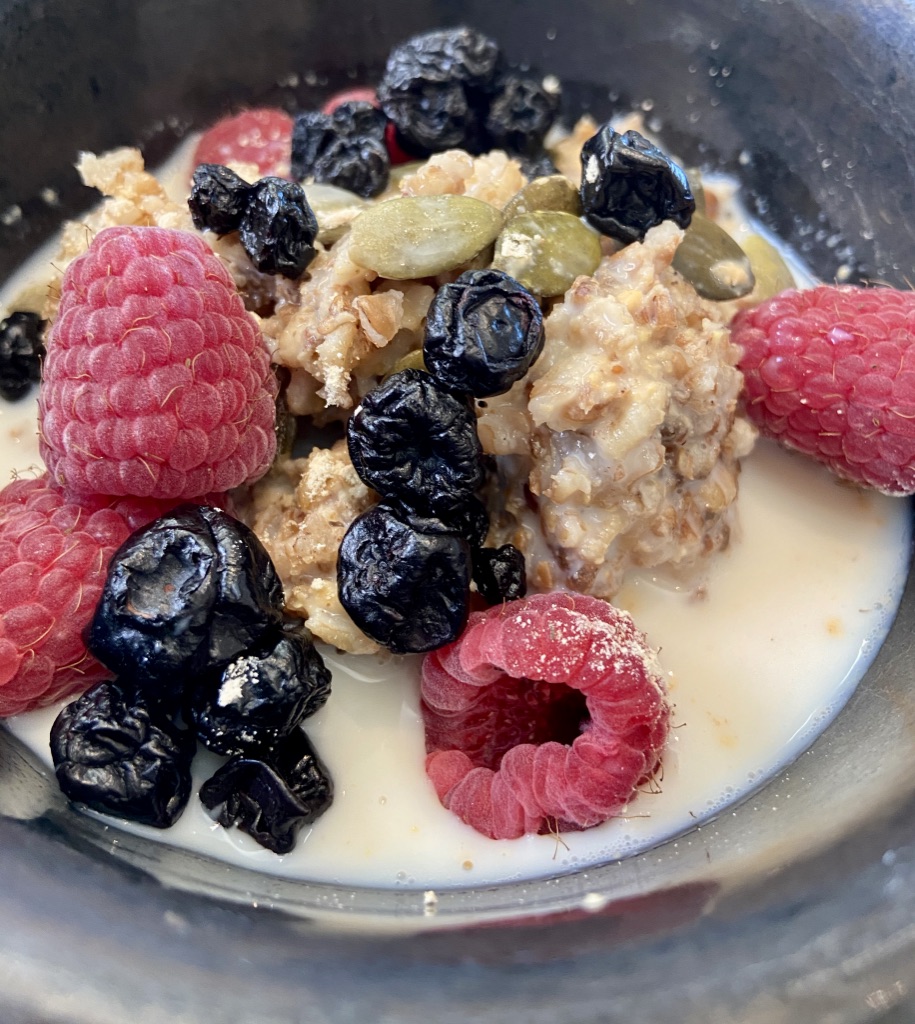
www.thevibrantveggie.com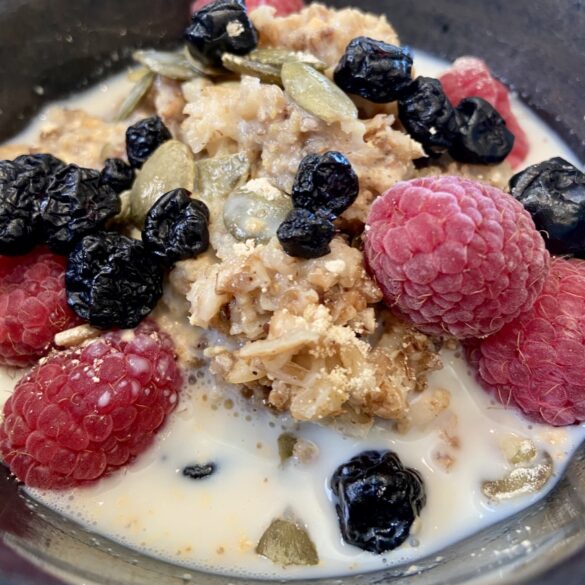
Ingredients
Instructions
If you like this recipe, you might also want to try these other two breakfast recipes!
